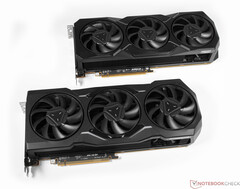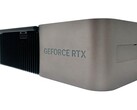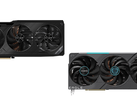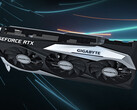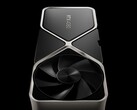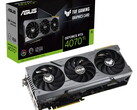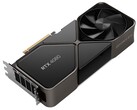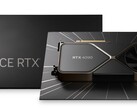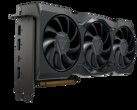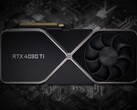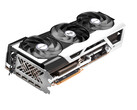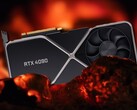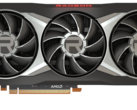Ever since AMD first announced the RDNA 3 architecture late last year, there were expectations that the flagship RDNA 3 GPU would be able to take on Nvidia's top-performing Ada card head on. AMD later clarified that the Radeon RX 7900 XTX is actually a GeForce RTX 4080 competitor and does not aim for RTX 4090 levels of performance.
Now, AMD explains why they didn't pursue an RTX 4090 competitor based on RDNA 3. The reason being that AMD wasn't sure of adequate market reception for a 600 W card. Speaking to Japanese publication ITMedia, AMD EVP Rick Bergman and SVP David Wang dwelt on current strategies and what the future holds.
When asked as to why AMD wasn't aiming to be the top dog on the GPU side like how it is pursuing Intel's best with respect to CPUs, Bergman said (Google translated with minor edits),
Technically, it is possible to develop a GPU with specs that compete with theirs (NVIDIA). However, the GPU developed in this way was introduced to the market as a "graphics card with a TDP (thermal design power) of 600 W and a reference price of $1,600 (about ¥219,000)" and was accepted by general PC gaming fans. After thinking about it, we chose not to adopt such a strategy.
The RDNA 3-based GPU "Radeon RX 7900XTX" released this time is targeted at $999 (about ¥136,000), which is considered to be the "upper price" assumed by high-end users among general PC gaming fans. The "Radeon RX 7900XT" below it is said to be $699 (about ¥95,000).
The price strategy is the same as the previous RDNA 2 (Radeon RX 6000 series), with the top-end "Radeon RX 6900XT" and "Radeon RX 6800XT" targeting $999 and $699, respectively. However, the target price changes for each GPU generation.
We take this strategy to fit into the mainstream infrastructure (hardware environment) utilized by today's PC gaming enthusiasts. At the same time as demanding high performance, it should be possible to operate with an existing "common sense" power supply unit, be able to cool the inside of the case "be installed without requiring an extremely large case." ――The Radeon RX high-end product group was designed with these in mind."
Although the RTX 4090 was initially expected to boast a 600 W TGP, the final RTX 4090 Founders Edition card was rated at 450 W TGP. As shown in our review, the card does have room to flex up to 600 W.
The fact that a real RTX 4090 competitor does not exist on the AMD side should not be construed as not having the capability to build one, according to Wang. He said,
If I may say a few words, we at AMD are developing and releasing ultra-high-performance GPUs. For example, two years ago, we announced the " Instinct MI200 series " as the world's first multi-die GPU. The top model of the series, "Instinct MI250X" marked the world's fastest theoretical performance of FP32 (single-precision floating-point arithmetic) at about 48 TFLOPS at the time. Since this is an Instinct series, it is not a GPU for gaming.
However, if you look at the Instinct series, you should know that AMD can develop (ultra-high-end GPUs) if they want to. We just don't think such GPUs are suitable for consumer use."
Fans, however, do expect each release to offer major face-offs between the two GPU giants. We saw that before with the GeForce GTX 580 and Radeon HD 7970 around 2011 and again with the GTX 980 Ti and the Radeon R9 Fury X in 2015. To which Bergman opined,
It was certainly hot back then. However, the performance range, development costs, and manufacturing costs of high-end GPUs are quite different from the past and now.
We haven't planned a "$1600 GPU" like the competition (NVIDIA) for PC gaming fans in recent years. Instead, we are focusing on planning a GPU that fits in the $1,000 class with a good balance between performance and cost.
There is a difference of about $600 from them (laughs), but I think that using that $600 to procure other parts - such as CPUs - will lead to a better gaming experience."
RDNA 3 is also the first to adopt a multi-chip architecture similar to what we've seen on Ryzen desktop CPUs. Here, a large 5 nm graphics core die (GCD) that contains the compute units and allied video codecs is surrounded by a 6 nm memory cache die (MCD) that houses the L3 cache blocks and GDDR6 memory. However, the GCD itself is a single unit and not a multi-chip module (MCM).
According to Wang, an MCM GPU brings with it technical difficulties and added costs.
The chiplet architecture can be used to realize high-performance processors while reducing manufacturing costs. As you know, current high-end GPU cores contain more than 10,000 arithmetic cores (floating point arithmetic units). This is over 1000 times the number of CPU cores. If you try to interconnect (connect) the GPU dies in this state, the number of connection points will be enormous, and reliable electrical signal transmission cannot be guaranteed. So, at the moment, it is difficult not only in man-hours but also in terms of cost to connect the GPU die with the same glue as the CPU die.
There's nothing you can't do, but... Rather than doing so, it is more efficient and less costly to create a large-scale GPU (core) at the moment. Therefore, in the current generation (RDNA 3 architecture), we decided to postpone the realization of "multi-GPU die".
Bergman further adds,
In the semiconductor business, we must constantly assess the trade-off between "performance" and "manufacturing cost". We will continue to challenge ourselves in this field (multi-GPU die), and I hope that you will look forward to it in the future."
AMD execs also reiterated the company's commitment to improving ray tracing performance and provision of tools to developers such as FidelityFX Super Resolution and FidelityFX Denoiser.
AMD's goals with the upcoming RDNA 4 architecture are to "improve execution efficiency" and "realize a highly flexible processing system" for ray tracing. But the execs were quick to clarify that any such innovation has to fit into the US$999 retail price goal for high-end GPUs.
Buy the PowerColor Hellhound Radeon RX 7900 XT with The Last of Us Part 1 offer on Amazon
Source(s)
ITMedia (Japanese)




